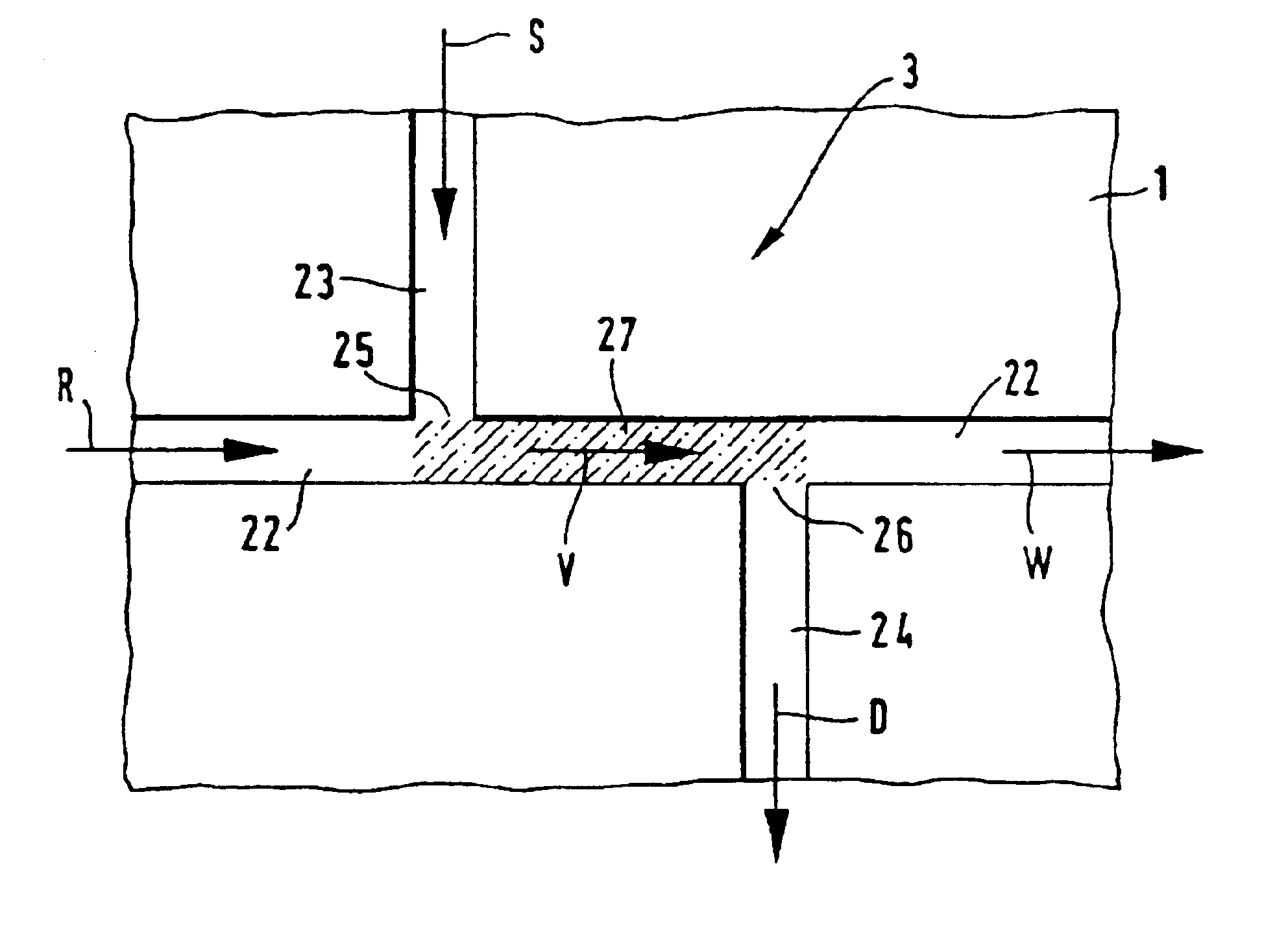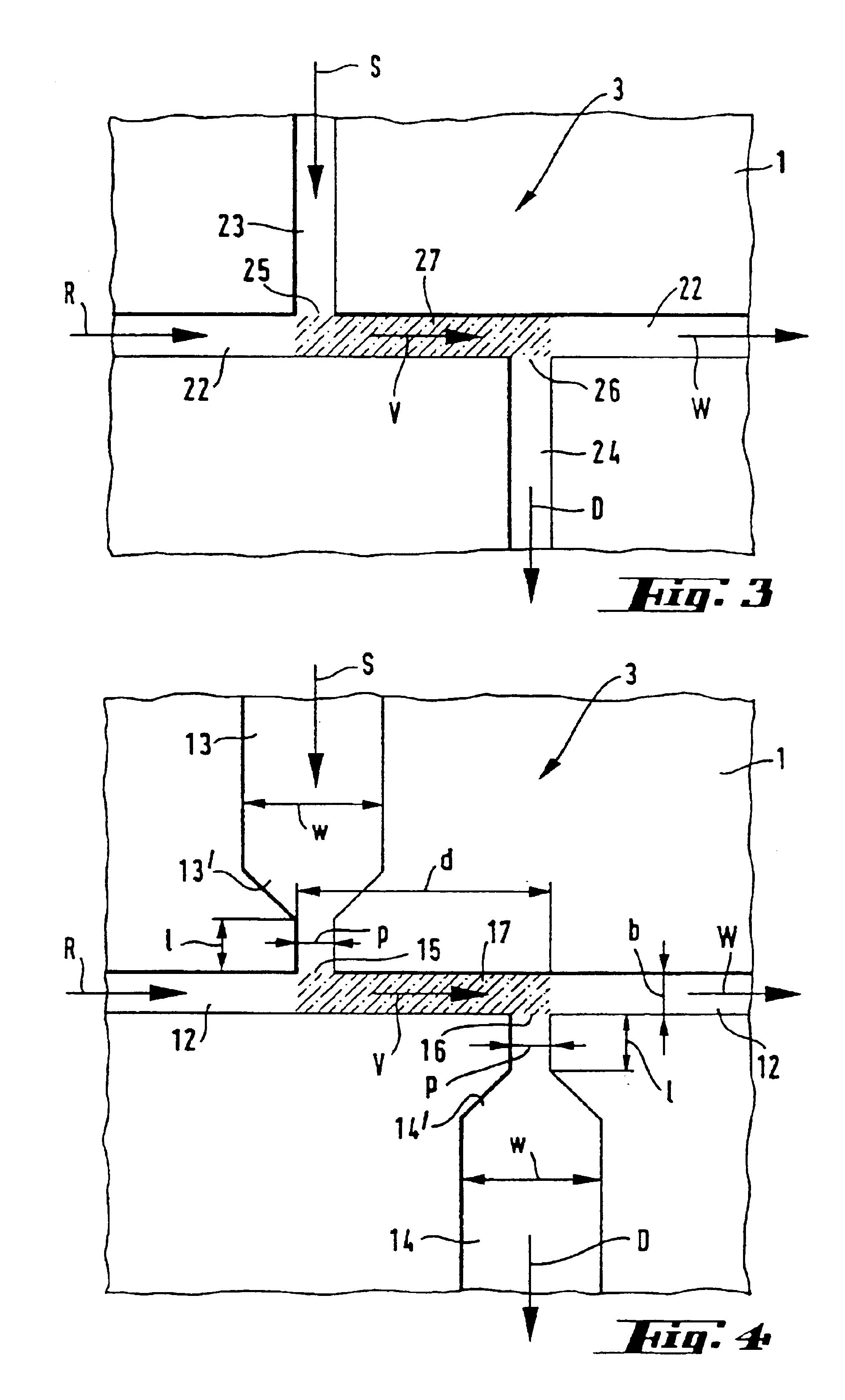Method for controlling sample introduction in microcolumn separation techniques and sampling device
a sampling device and microcolumn separation technology, applied in the direction of fluid pressure measurement, liquid/fluent solid measurement, peptide measurement, etc., can solve the problem of reducing the detection limits considerably, high noise of detected signals, and well-known bias of actual sample composition
- Summary
- Abstract
- Description
- Claims
- Application Information
AI Technical Summary
Benefits of technology
Problems solved by technology
Method used
Image
Examples
Embodiment Construction
[0017]In FIGS. 1 and 2 an exemplary embodiment of a microcolumn separation device, more particularly of an electrophoretic separation device, is depicted. It comprises a base part 1 and a lid part 2. The base part 1 can be made of glass, monocrystalin silicon or other materials known from semiconductor manufacture, or of a suitable polymer material. The lid part 2 is preferably made of glass. The base part 1 comprises a channel system 4 which is etched, micromachined or otherwise established in its surface. Preferably techniques known from semiconductor manufacture are applied for creating the channel system in the surface of the base part 1. The lid part is provided with through holes R, S, D, W, which communicate with the channel system 4 and are adapted to accommodate and hold the ends of capillary tubes. The lid part 2 is also provided with various ports for light waveguides, which are part of an optical detection system, such as, for example, a fluorescence detection system, or...
PUM
| Property | Measurement | Unit |
|---|---|---|
| electric field strength | aaaaa | aaaaa |
| electric field | aaaaa | aaaaa |
| angle | aaaaa | aaaaa |
Abstract
Description
Claims
Application Information
 Login to View More
Login to View More - R&D
- Intellectual Property
- Life Sciences
- Materials
- Tech Scout
- Unparalleled Data Quality
- Higher Quality Content
- 60% Fewer Hallucinations
Browse by: Latest US Patents, China's latest patents, Technical Efficacy Thesaurus, Application Domain, Technology Topic, Popular Technical Reports.
© 2025 PatSnap. All rights reserved.Legal|Privacy policy|Modern Slavery Act Transparency Statement|Sitemap|About US| Contact US: help@patsnap.com



